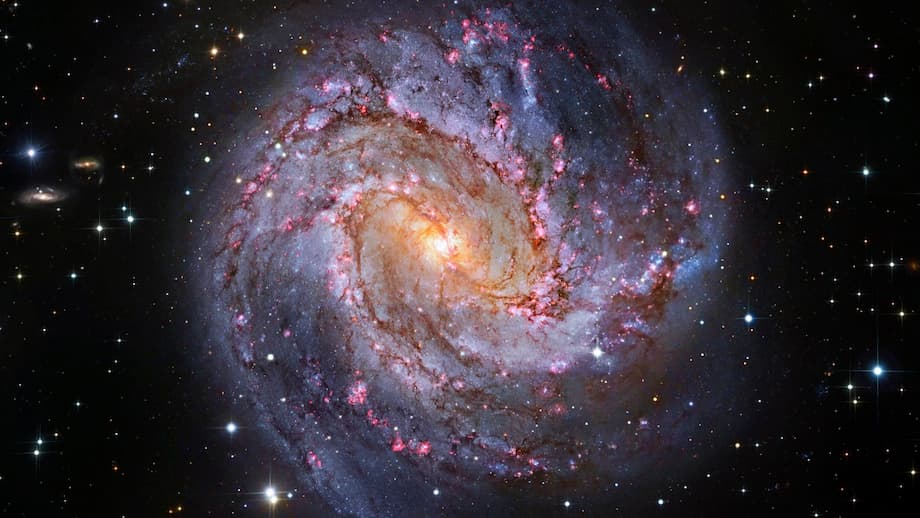AI Ushers in a New Era for Mapping the Universe
For centuries, astronomers have gazed at the night sky, seeking to unravel the mysteries of stars, galaxies, and the vast cosmic web that binds them. Today, the sheer scale of the universe presents a new challenge: how do we classify and understand billions of celestial objects when traditional methods can barely keep pace? In a groundbreaking leap, a team of scientists from China’s Yunnan Observatories has developed an artificial intelligence (AI) model that has already classified more than 27 million cosmic objects—stars, galaxies, and quasars—across a vast swath of the sky. This achievement marks a pivotal moment in astronomy, promising to transform how we explore and comprehend the universe.
Why Classifying the Cosmos Is So Challenging
Modern astronomy is in the midst of a data explosion. Advanced telescopes and sky surveys, such as the Sloan Digital Sky Survey (SDSS), Kilo-Degree Survey (KiDS), and the European Space Agency’s Euclid mission, are capturing images and measurements of billions of objects. Each new survey adds terabytes of data, revealing galaxies billions of light-years away, supernovae, and the intricate structure of the cosmic web.
Traditionally, astronomers have relied on spectroscopy—analyzing the light from an object to determine its composition, distance, and type. Spectroscopy is precise but slow and resource-intensive. With the volume of data now available, it’s simply impossible for humans to keep up using manual or even semi-automated methods. As a result, astronomers have increasingly turned to photometric surveys, which capture images in different colors (wavelengths) but lack the detailed information of spectra. While faster, photometric data can be ambiguous: distant galaxies, stars, and quasars often appear as tiny, bright dots, making them hard to distinguish by shape alone.
The Limits of Human and Traditional Machine Classification
Efforts to automate classification have included classical machine learning algorithms—such as decision trees and random forests—and more recently, deep learning neural networks. These methods have achieved impressive accuracy, but challenges remain, especially for faint or distant objects, or in regions obscured by cosmic dust. As one study from the University of La Serena in Chile found, machine learning models can struggle in difficult regions like the “zone of avoidance,” where dust blocks much of the visible light, leading to high error rates unless models are trained on diverse, multi-wavelength data.
How the Chinese AI Model Works
The new AI model developed by the Yunnan Observatories team represents a significant advance. Unlike previous approaches that relied on either the appearance (morphology) or the color (spectral energy distribution, or SED) of objects, this neural network processes both types of information simultaneously. This dual-input design allows the AI to pick up subtle differences between stars, galaxies, and quasars that might otherwise be missed.
The model was trained on spectroscopically confirmed sources from the SDSS’s 17th data release—a gold standard in astronomical classification. It was then tested on images from the KiDS survey, focusing on objects brighter than r = 23 magnitude, covering about 1,350 square degrees of sky. The result: over 27 million objects classified with remarkable speed and accuracy.
Validation and Accuracy Across Multiple Surveys
To ensure reliability, the team validated their model using data from other major surveys. When applied to 3.4 million sources from the Gaia mission—primarily stars with well-known motions—the AI correctly identified 99.7% as stars. A similar success rate was achieved with the Galaxy And Mass Assembly (GAMA) survey, where 99.7% of galaxies and quasars were accurately classified. In some cases, the AI even corrected past mistakes, reclassifying objects previously mislabeled in older catalogs.
This high level of accuracy demonstrates the model’s robustness and its potential to improve existing astronomical databases, making it a valuable tool for the astronomical community.
AI and the Global Race to Map the Universe
The Chinese breakthrough is part of a broader trend: astronomers worldwide are racing to develop AI tools capable of handling the deluge of data from next-generation telescopes. The European Space Agency’s Euclid mission, for example, has already mapped 26 million galaxies in just a fraction of its planned survey area. Over the next six years, Euclid will image more than 1.5 billion galaxies, sending back around 100 gigabytes of data every day. Similarly, the upcoming Vera Rubin Observatory is expected to detect millions of new supernovae and other transient events, with AI tools like the Bright Transient Survey Bot (BTSbot) already automating the discovery and classification process for supernovae in the Zwicky Transient Facility survey.
Citizen Science and AI: A Powerful Partnership
Given the scale of the challenge, astronomers are also enlisting the help of the public. Projects like Galaxy Zoo and the new “Galaxy Zoo: Euclid” invite volunteers worldwide to help classify galaxy shapes. These citizen scientists work alongside AI algorithms—such as ZooBot—which handle simpler cases and refer more complex images to humans. This collaboration not only accelerates classification but also helps train and improve the AI, creating a virtuous cycle of discovery.
NASA’s James Webb Space Telescope and the Euclid mission both rely on this hybrid approach, with thousands of volunteers and advanced AI working together to build the largest and most detailed catalogs of galaxy morphology ever assembled.
How AI Is Changing Astronomy
The impact of AI on astronomy goes far beyond speed. By rapidly and accurately classifying vast numbers of objects, AI enables scientists to:
- Discover rare or unusual objects, such as ring galaxies or distant quasars, that might otherwise be overlooked.
- Trace the structure and evolution of galaxies across cosmic time, shedding light on how the universe has changed over billions of years.
- Map the distribution of dark matter and dark energy by analyzing the shapes and positions of galaxies and the effects of gravitational lensing.
- Improve the accuracy and completeness of astronomical catalogs, correcting past errors and filling in gaps.
For example, the recent discovery of 30,000 rare ring galaxies by a combination of AI and citizen scientists in the GALAXY CRUISE project has provided a large enough sample for meaningful scientific analysis, revealing new insights into how these unusual structures form—often through the collision of spiral galaxies.
Technical Innovations: Multi-Modal and Pixel-Level Analysis
Recent advances in AI for astronomy include multi-modal deep learning architectures, which combine image data with tabular metadata (such as brightness, color, and redshift) for improved accuracy. Studies have shown that these models outperform those using only one type of data, achieving higher precision and recall with fewer training epochs. Some tools, like the Morpheus AI developed at UC Santa Cruz, even analyze images pixel by pixel, allowing for detailed morphological classification and the identification of complex structures within galaxies.
These innovations are essential as surveys become more ambitious. The Euclid mission, for instance, aims to map the 3D distribution of dark matter by measuring the subtle distortions in galaxy shapes caused by gravitational lensing—a task that would be impossible without advanced AI and machine learning techniques.
Limits and Challenges of AI in Astronomy
Despite these advances, AI is not a panacea. The accuracy of any model depends heavily on the quality and diversity of its training data. Models trained on one survey may not perform as well on data from different instruments or regions of the sky, especially in challenging environments like the zone of avoidance. As highlighted by recent research, machine learning models can struggle to classify objects in regions obscured by dust or with unusual properties, sometimes failing to detect or correctly identify a significant fraction of objects.
Moreover, AI models can inherit biases from their training data, potentially overlooking rare or unexpected phenomena. That’s why human expertise and citizen science remain crucial, both for validating AI results and for discovering the truly novel.
Future Directions: Smarter, More Adaptable AI
The Yunnan Observatories team and others are now working to improve their models’ ability to handle even fainter objects and adapt to new surveys with different characteristics. This includes training on more diverse datasets, incorporating multi-wavelength data, and developing algorithms that can flag uncertain or unusual cases for human review.
As AI continues to evolve, its partnership with astronomers—both professional and amateur—will be key to unlocking the secrets of the universe.
Broader Implications: A New Golden Age of Discovery
The rise of AI in astronomy is not just a technical achievement; it represents a profound shift in how science is done. By automating the tedious work of classification, AI frees astronomers to focus on interpretation, theory, and the search for the unknown. It also democratizes discovery, allowing anyone with an internet connection to contribute to the mapping of the cosmos.
With missions like Euclid, James Webb, and the Vera Rubin Observatory poised to deliver unprecedented volumes of data, the combination of AI, machine learning, and citizen science is ushering in a new golden age of astronomical discovery. The universe is vast and mysterious, but with these new tools, we are better equipped than ever to explore its depths.
In Summary
- A Chinese AI model has classified over 27 million stars, galaxies, and quasars, marking a major advance in astronomical data analysis.
- The model uses both morphological and spectral energy distribution features for high accuracy, validated across multiple surveys.
- AI is essential for handling the massive data from modern sky surveys like Euclid and the Vera Rubin Observatory.
- Citizen science projects, such as Galaxy Zoo, work alongside AI to classify complex or ambiguous objects, improving both speed and accuracy.
- AI enables the discovery of rare objects and the correction of past catalog errors, but still faces challenges in difficult regions and with unusual phenomena.
- The future of cosmic classification lies in smarter, more adaptable AI models and continued collaboration between machines and humans.




